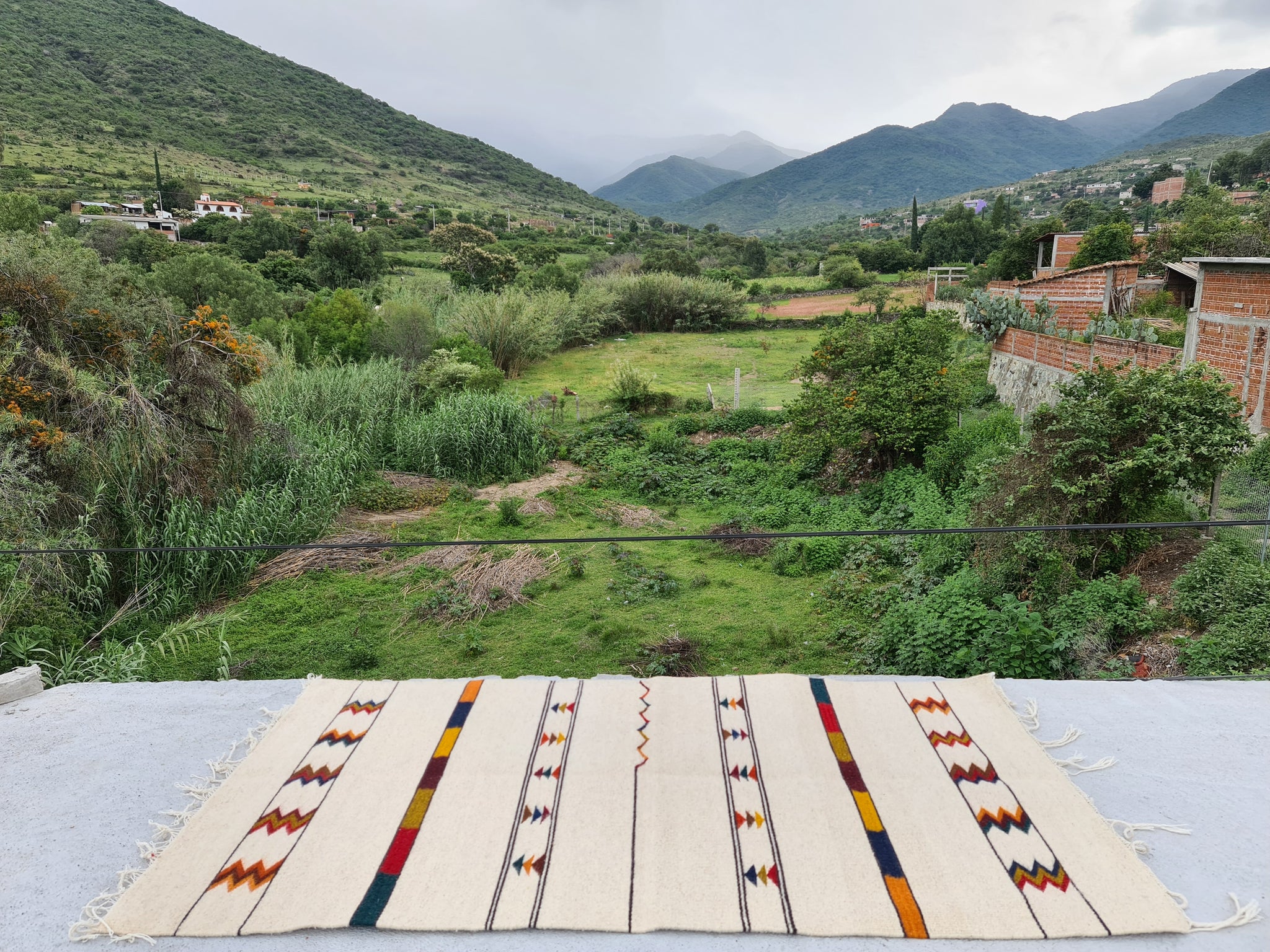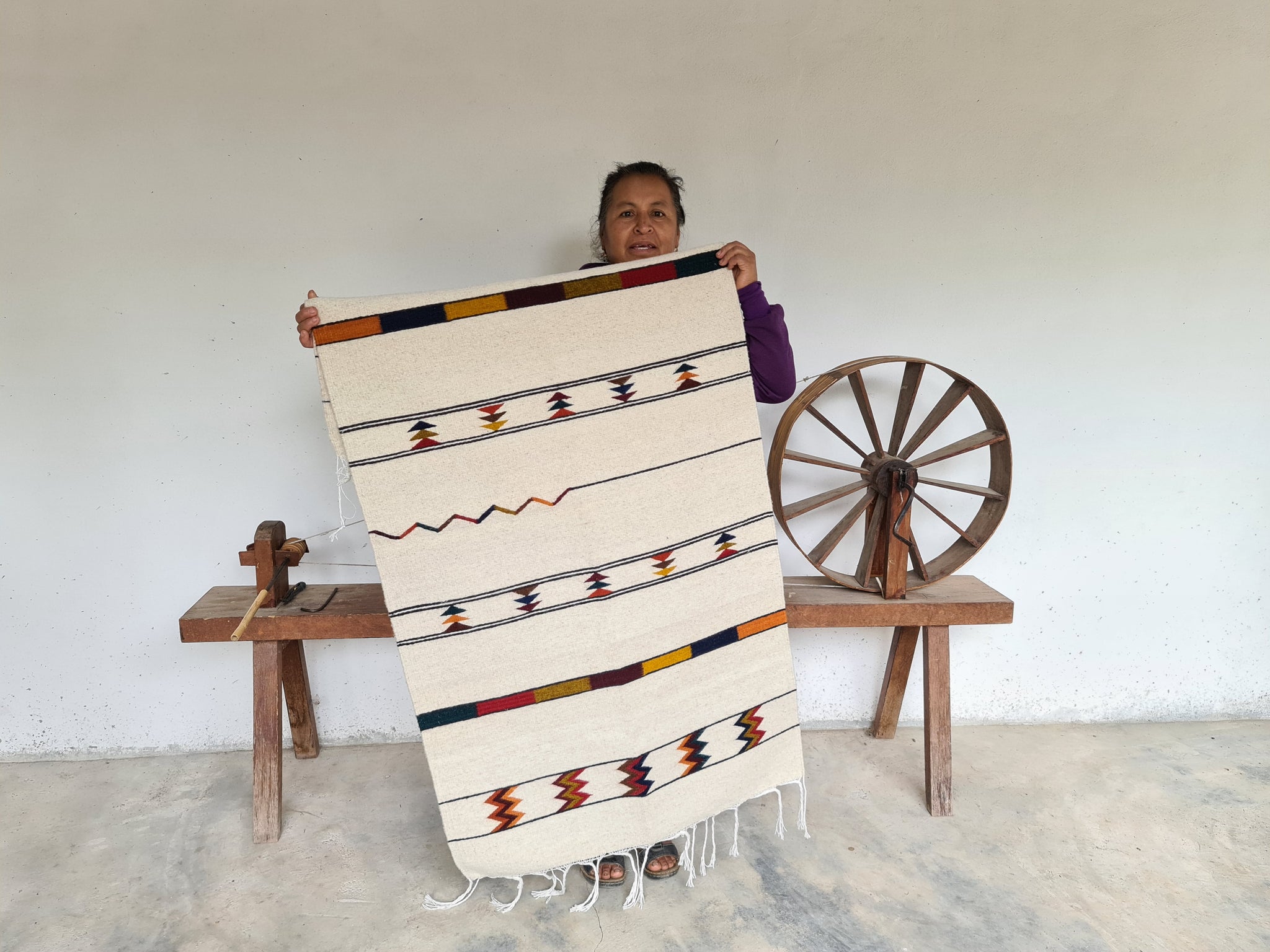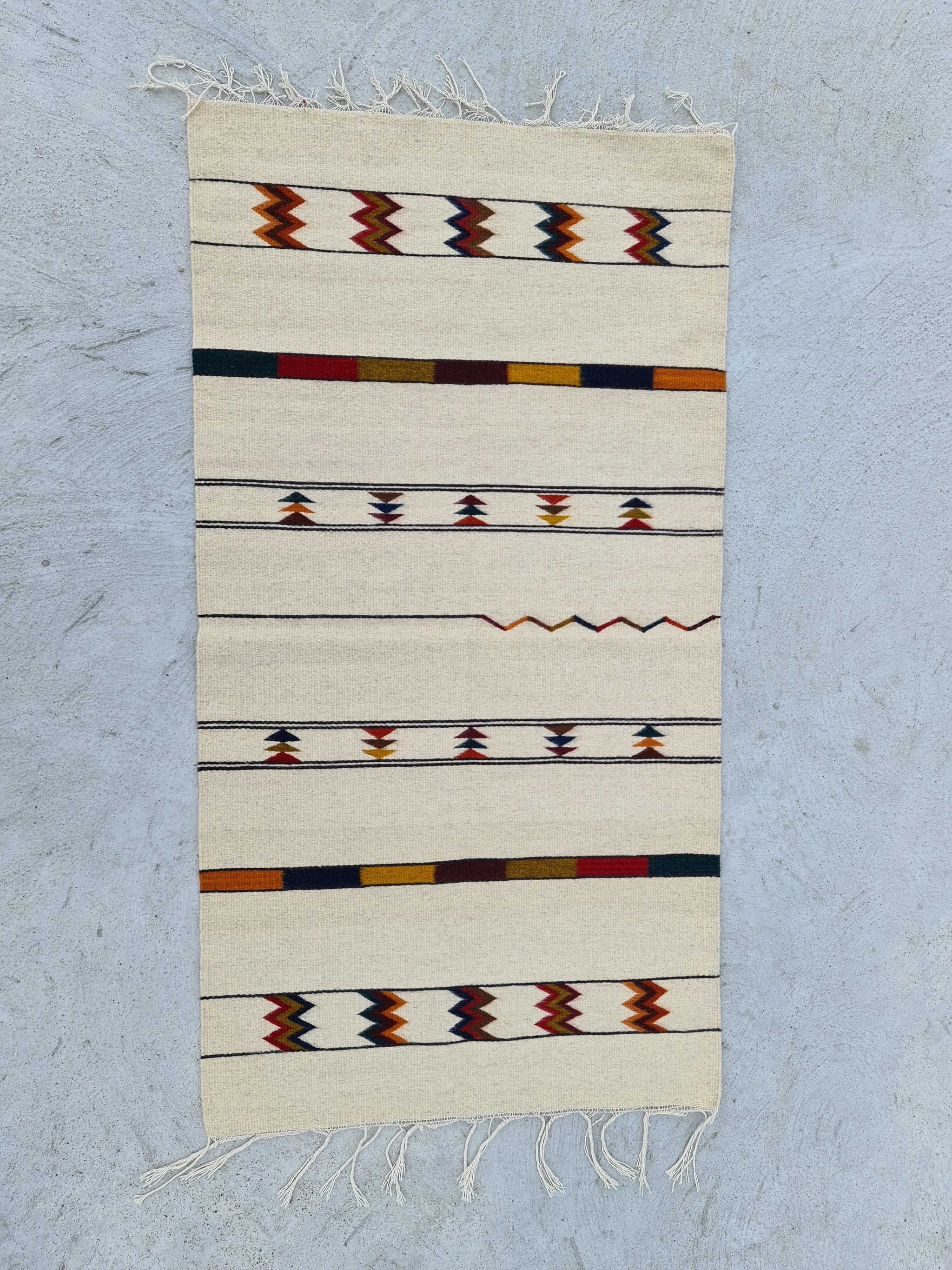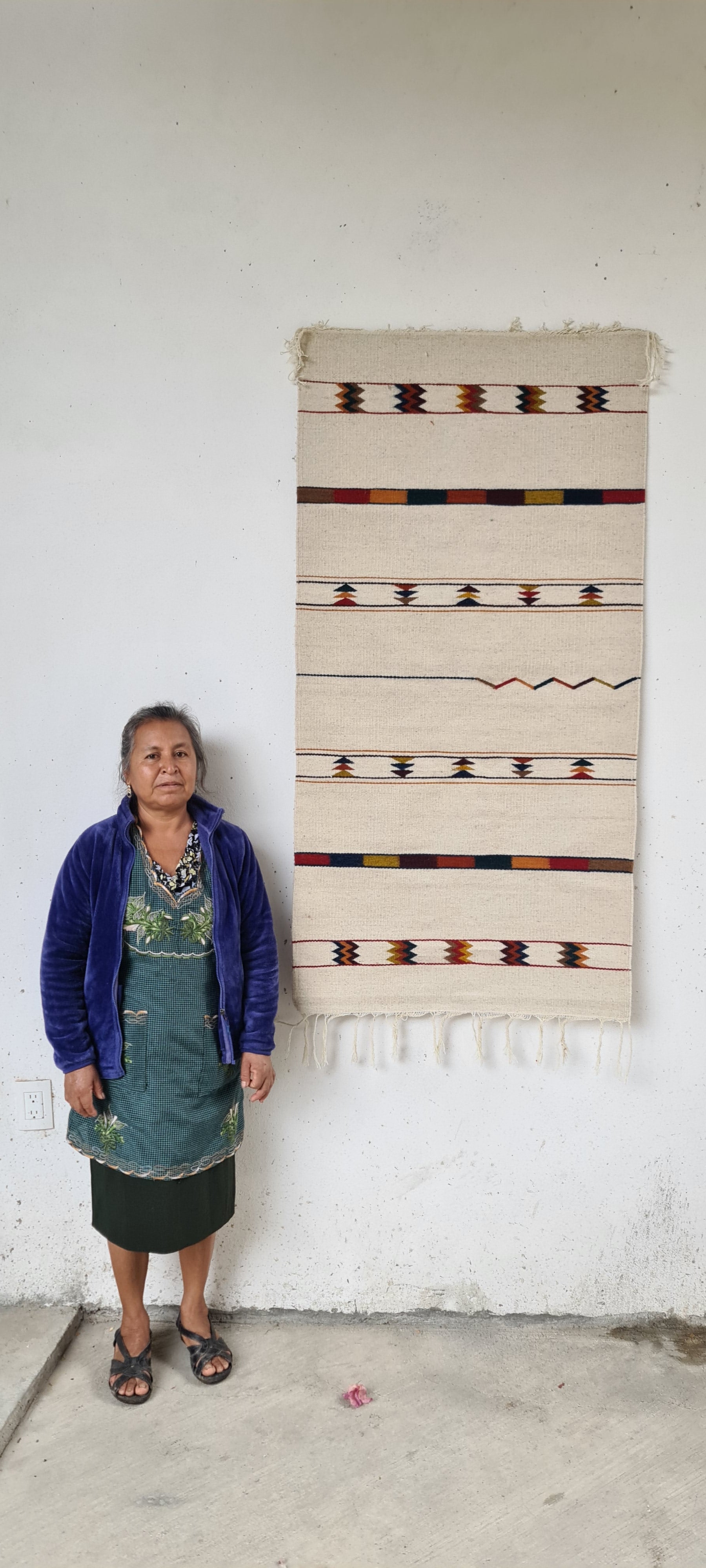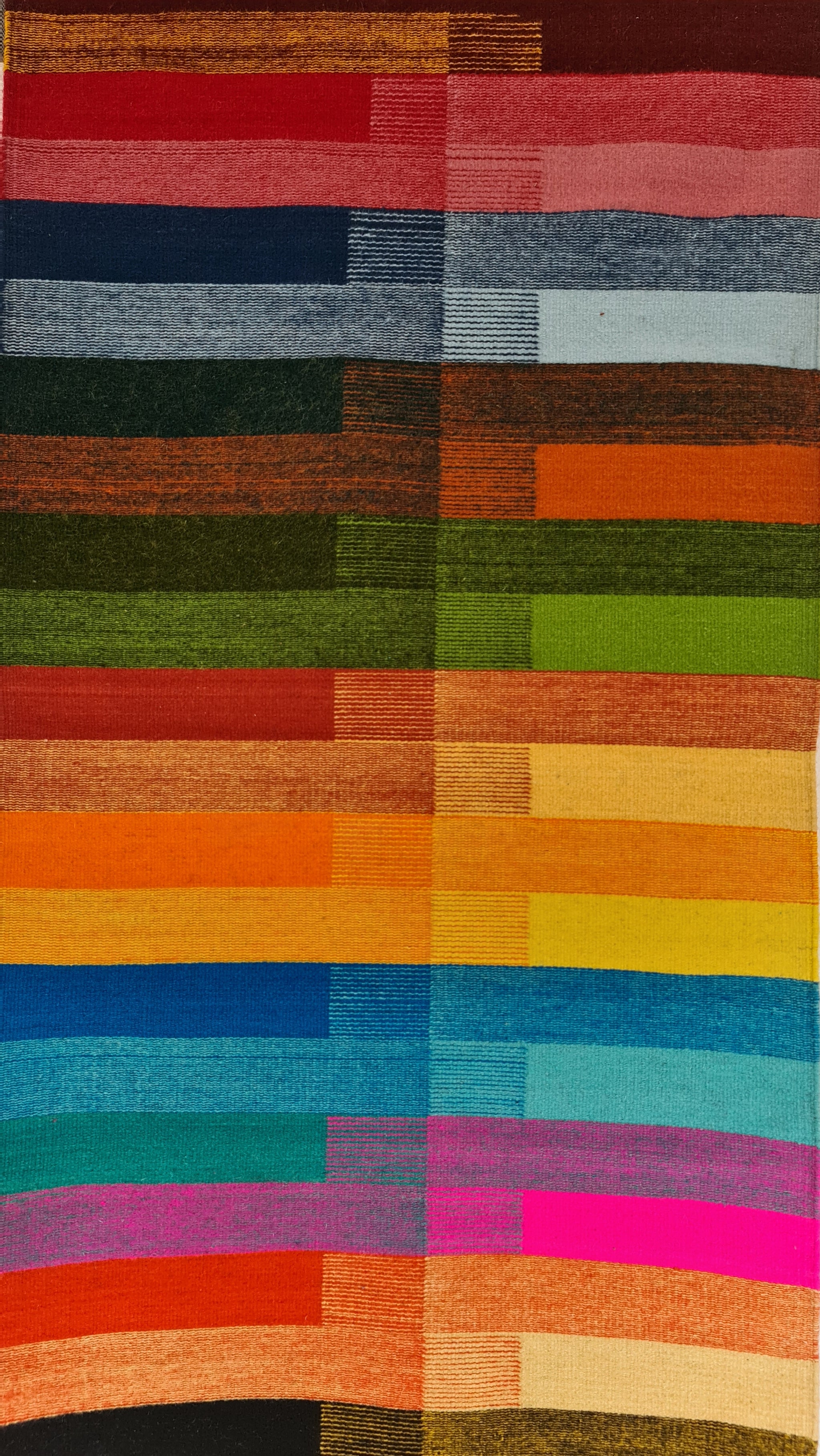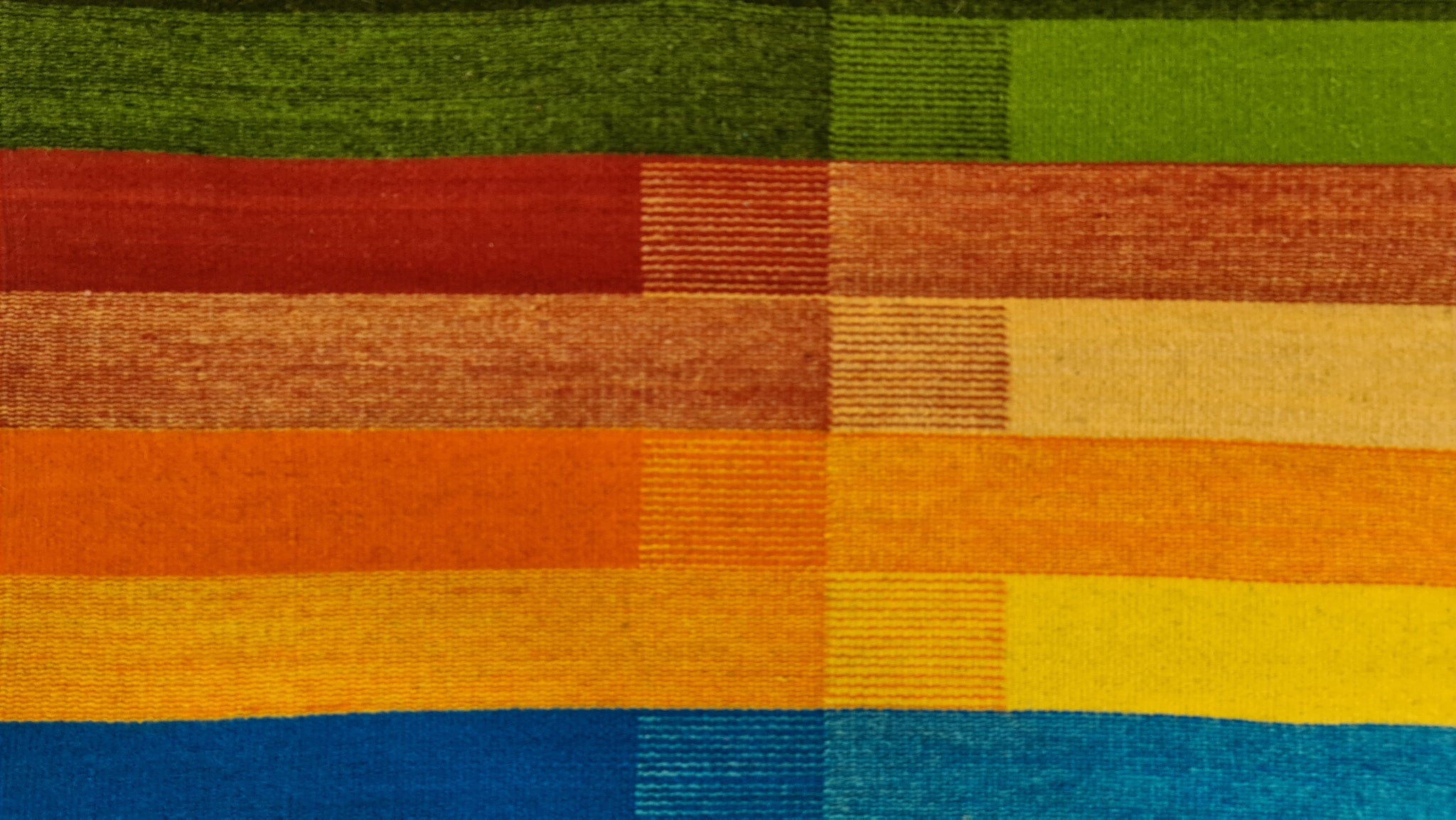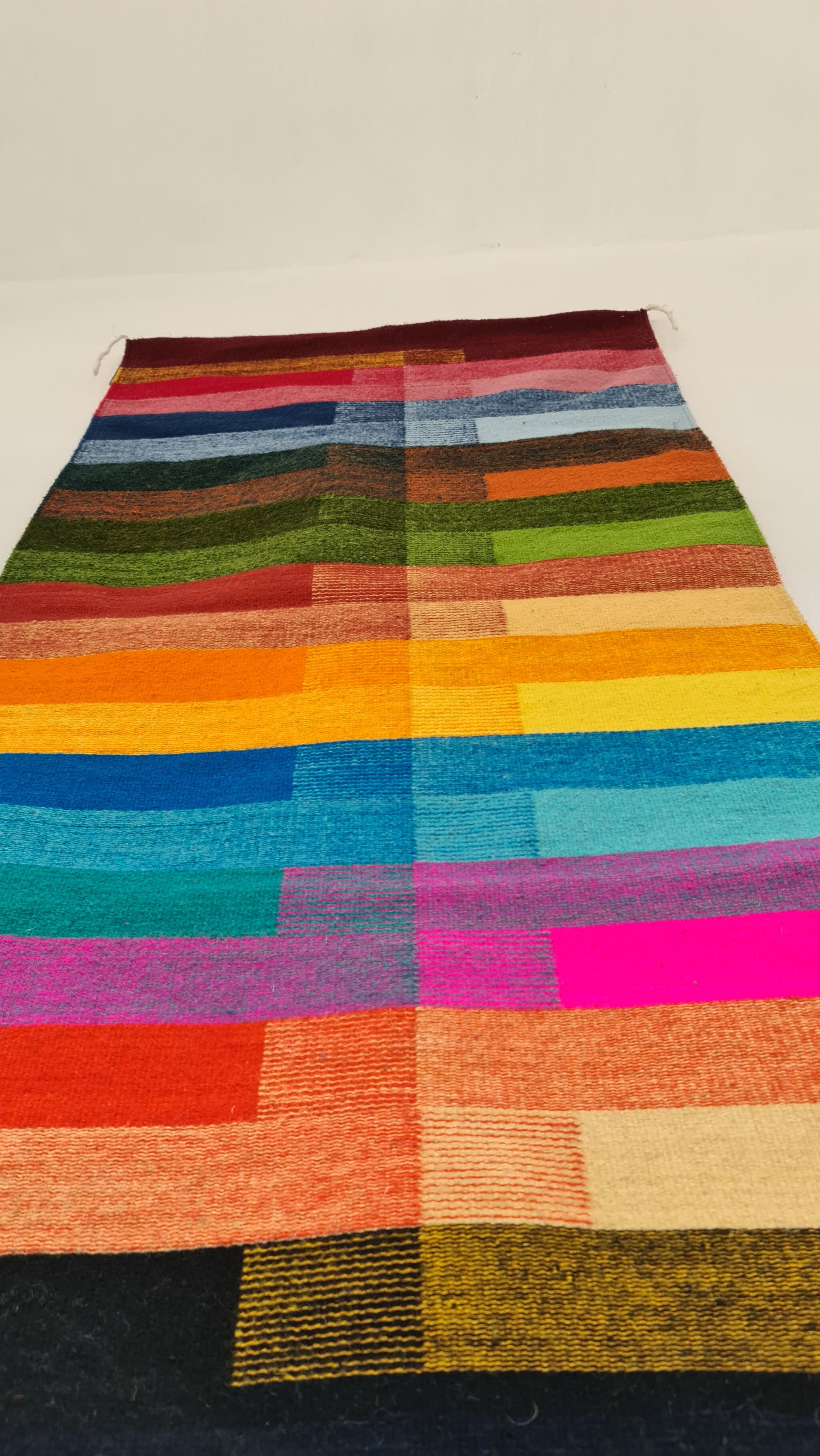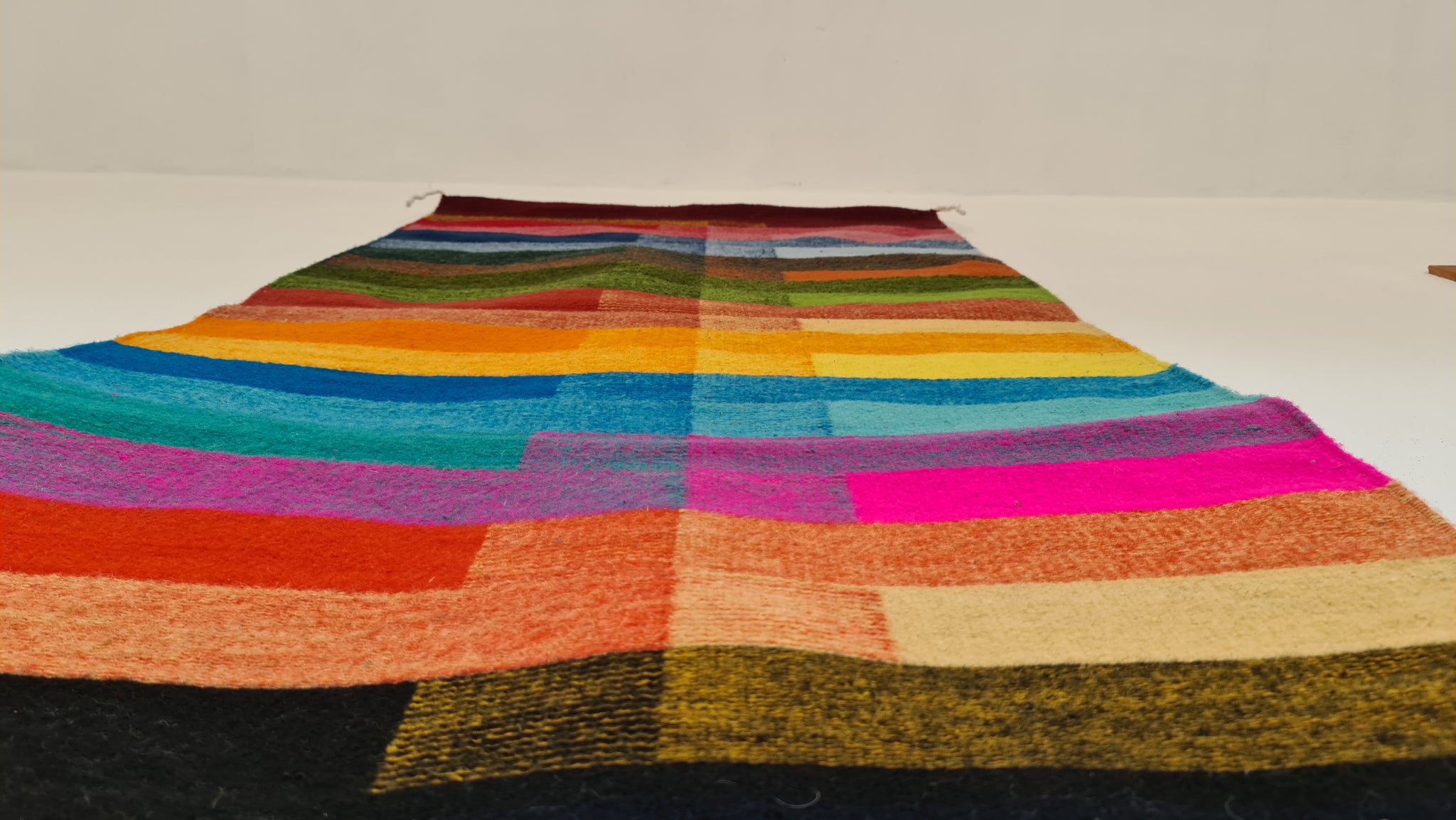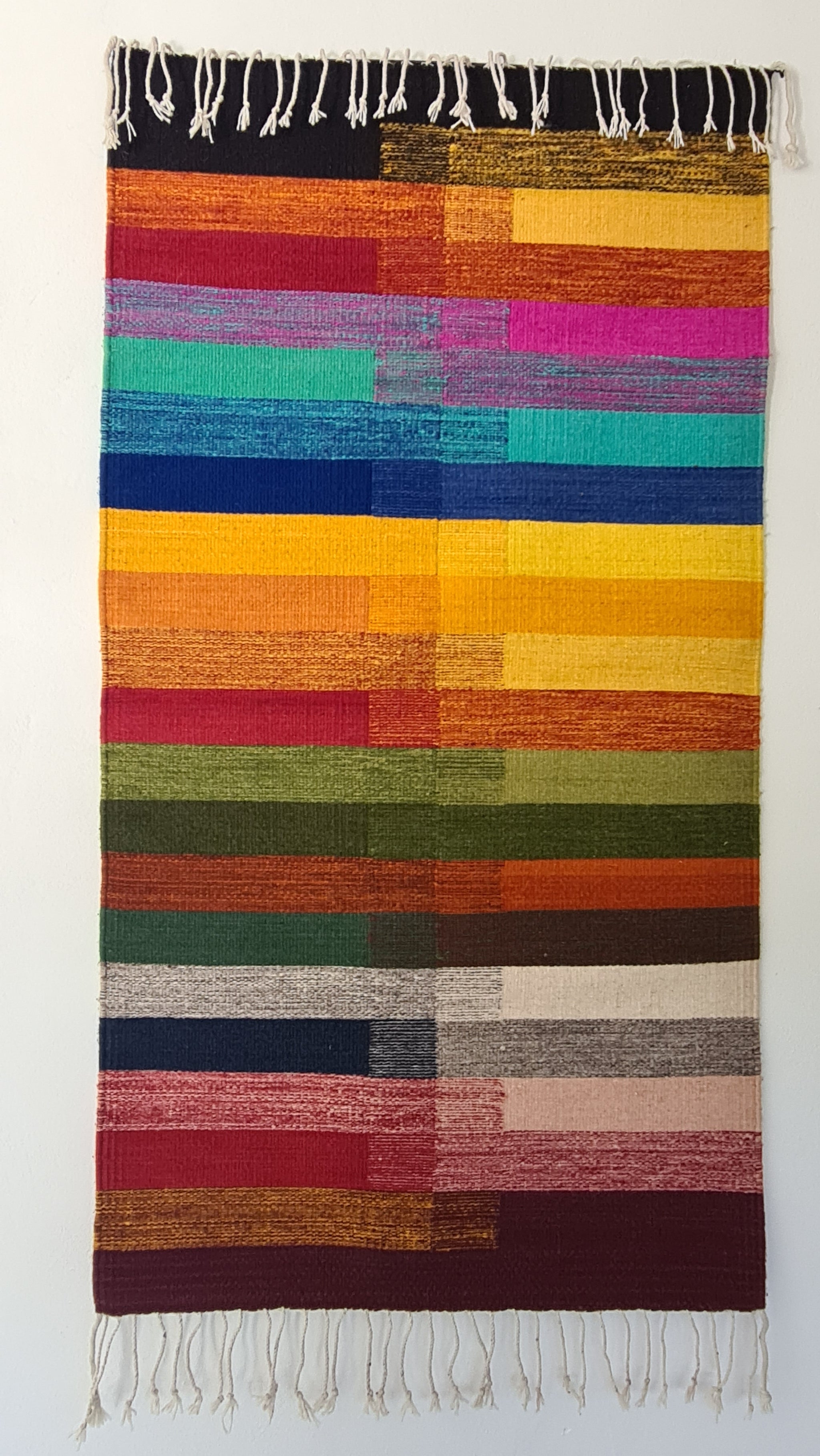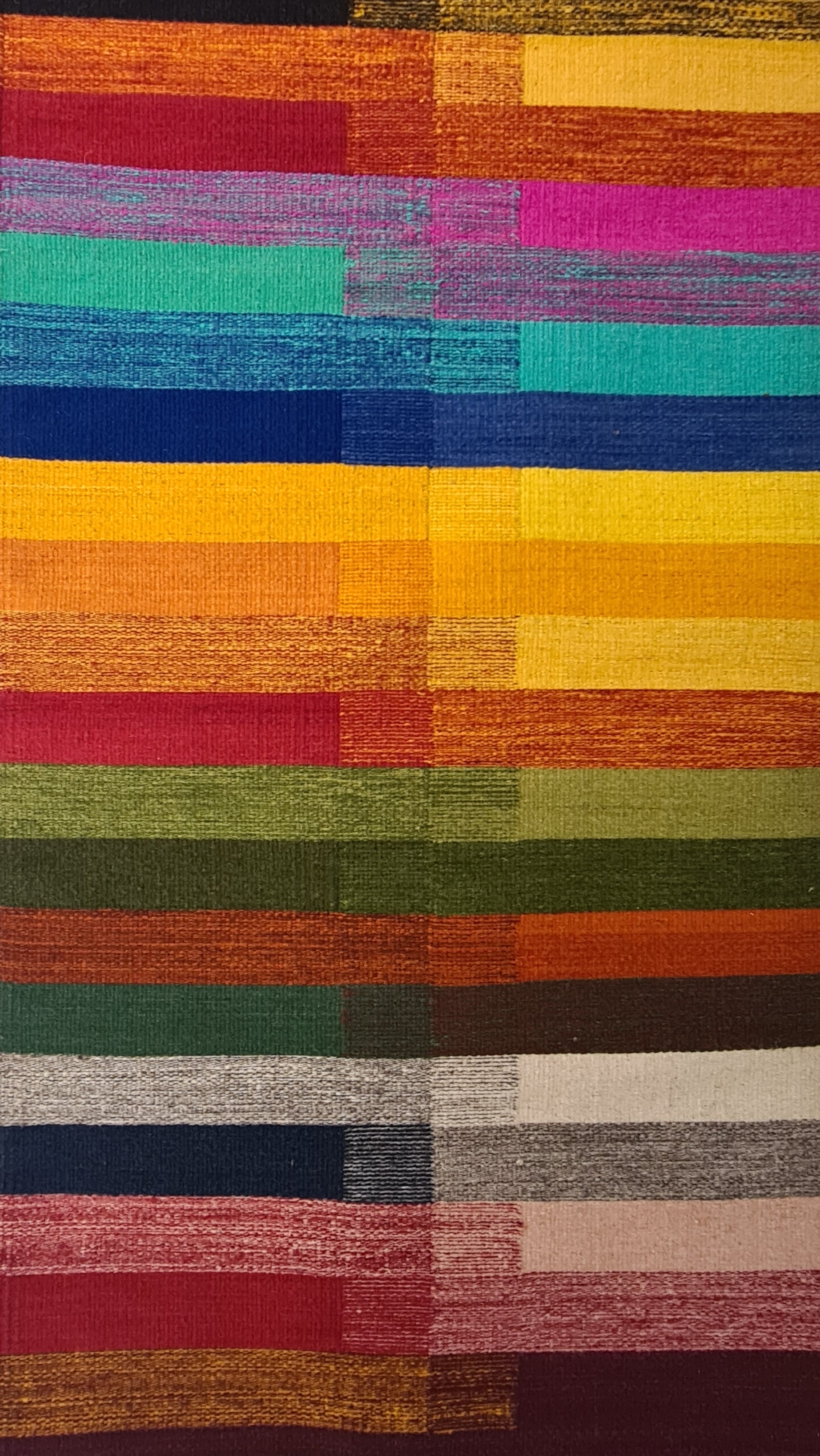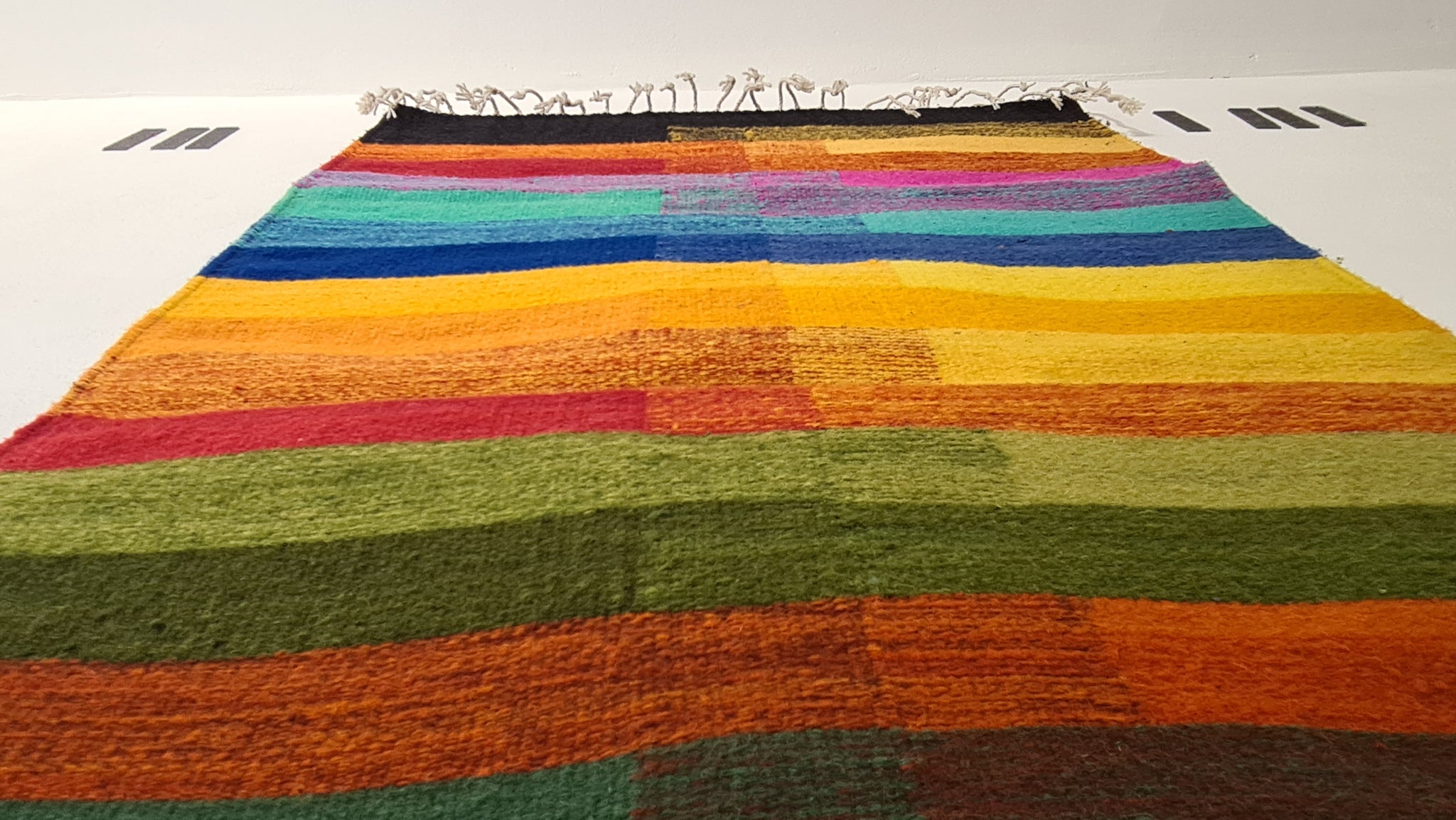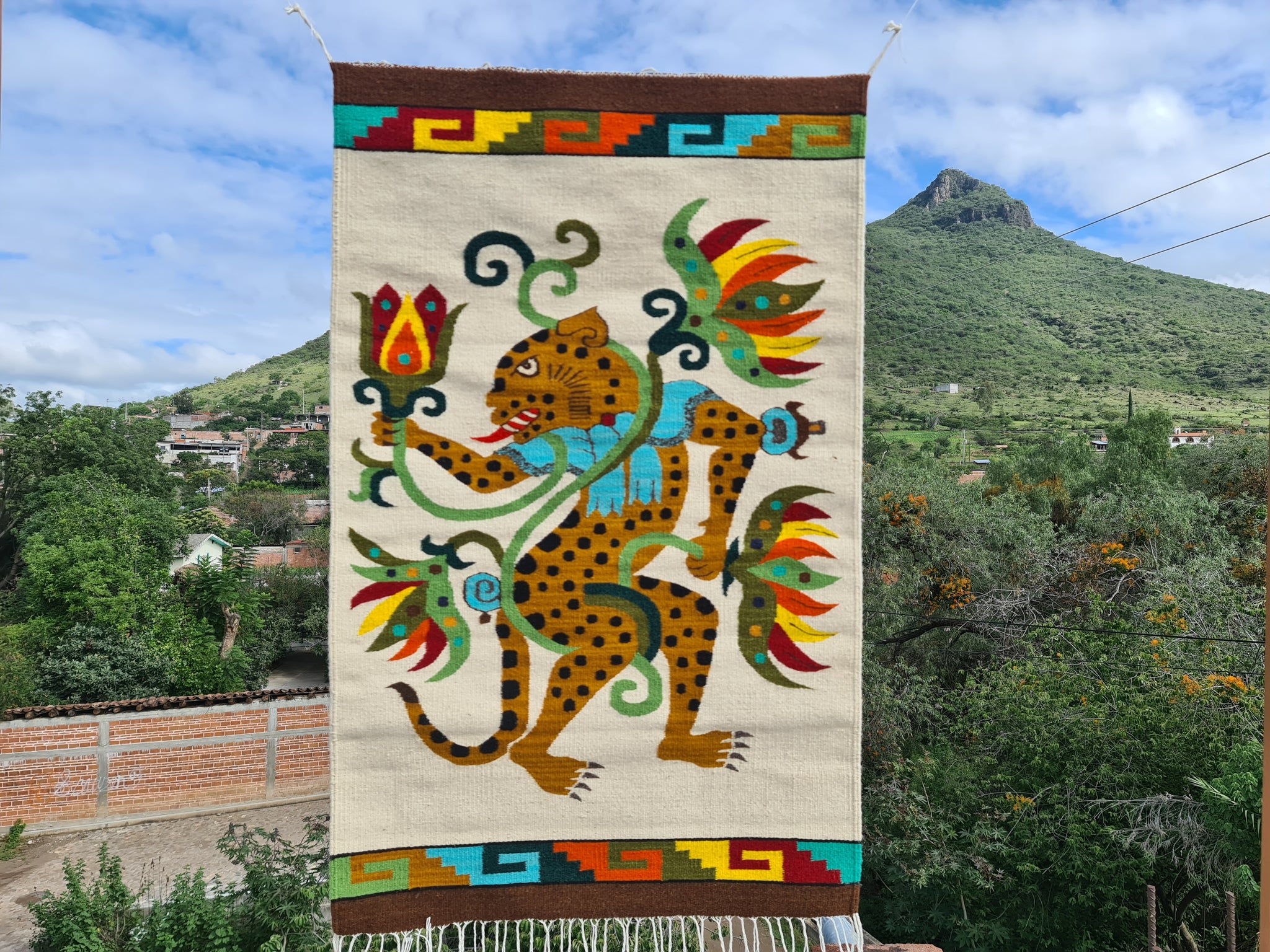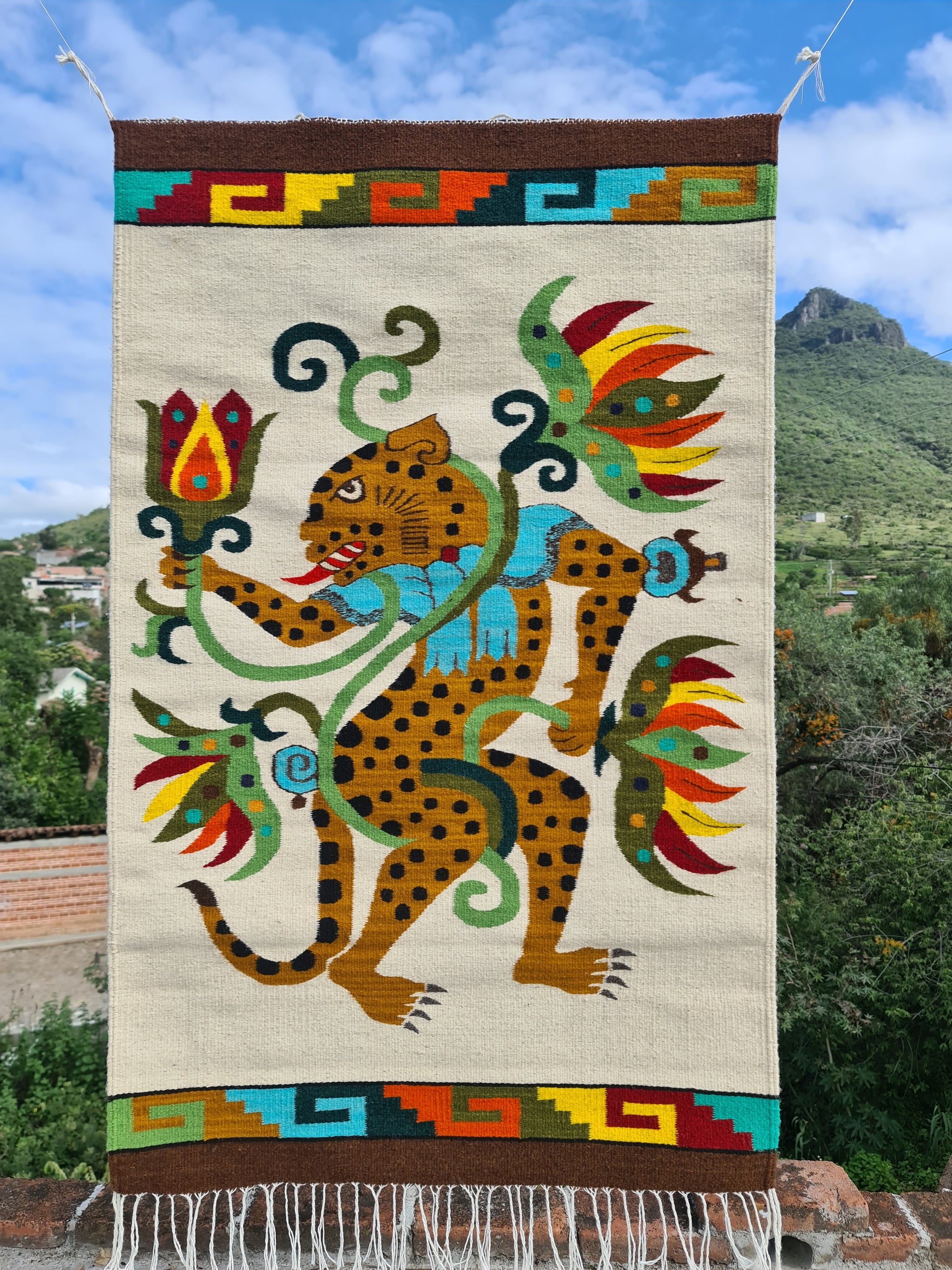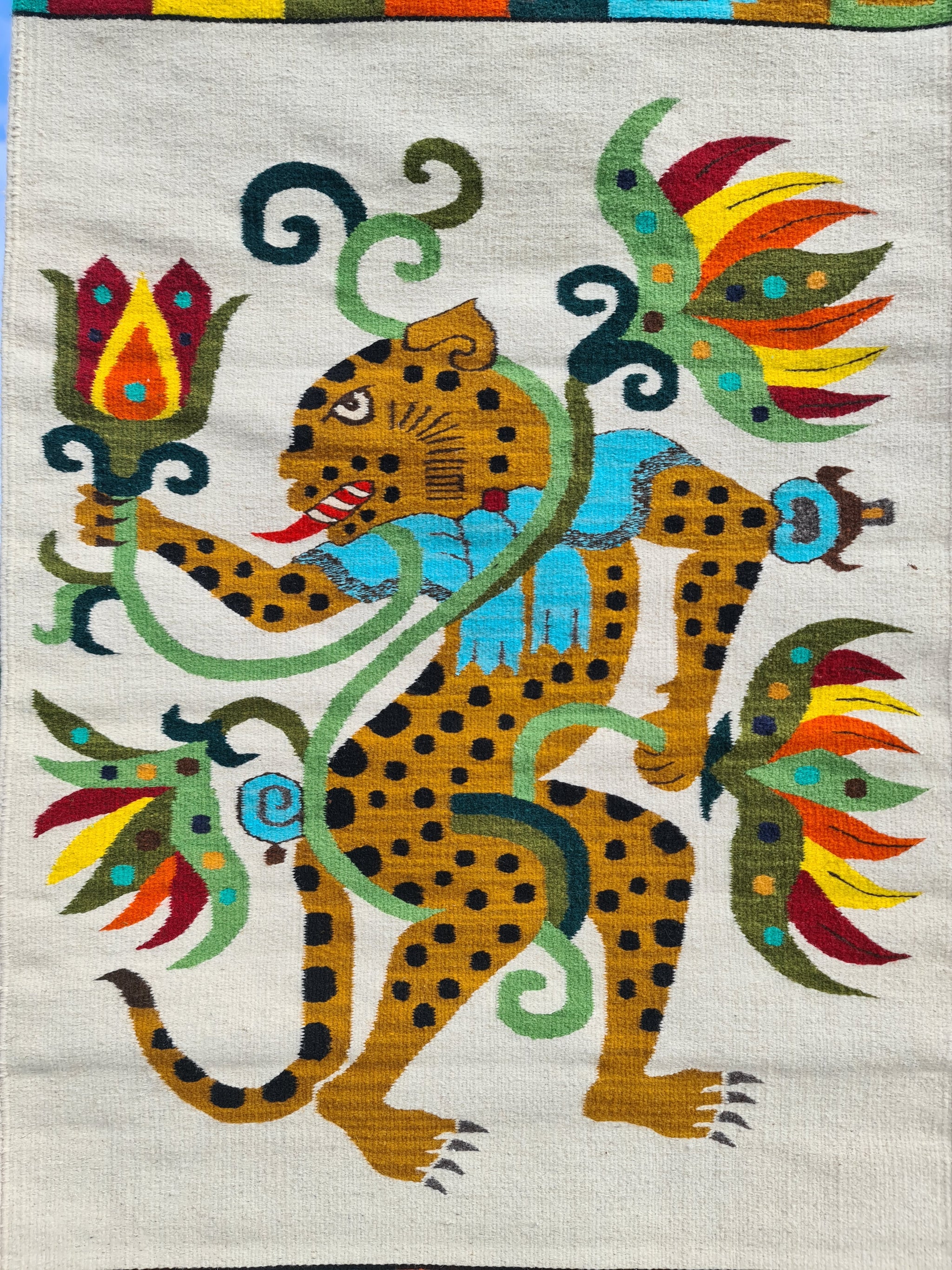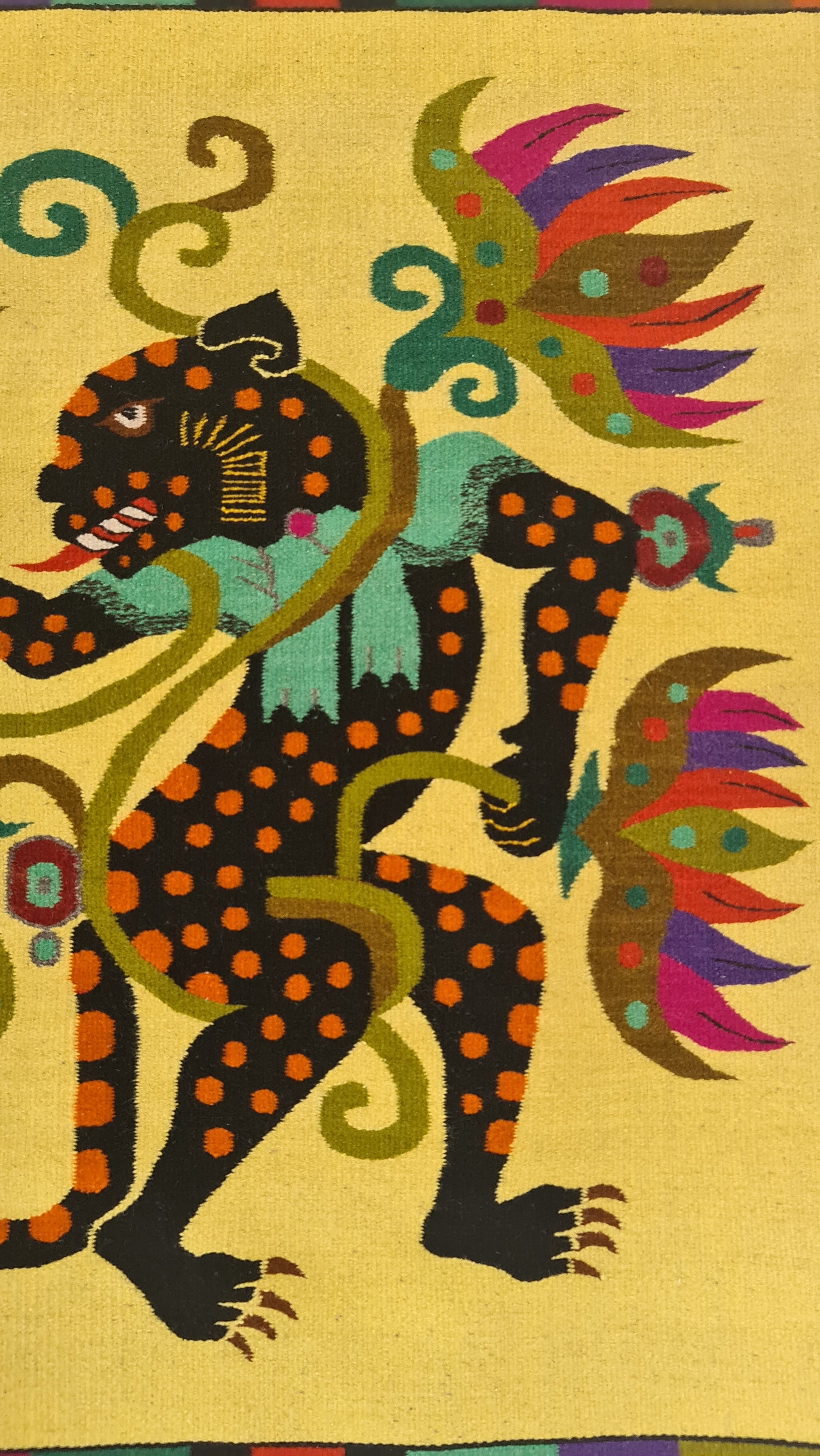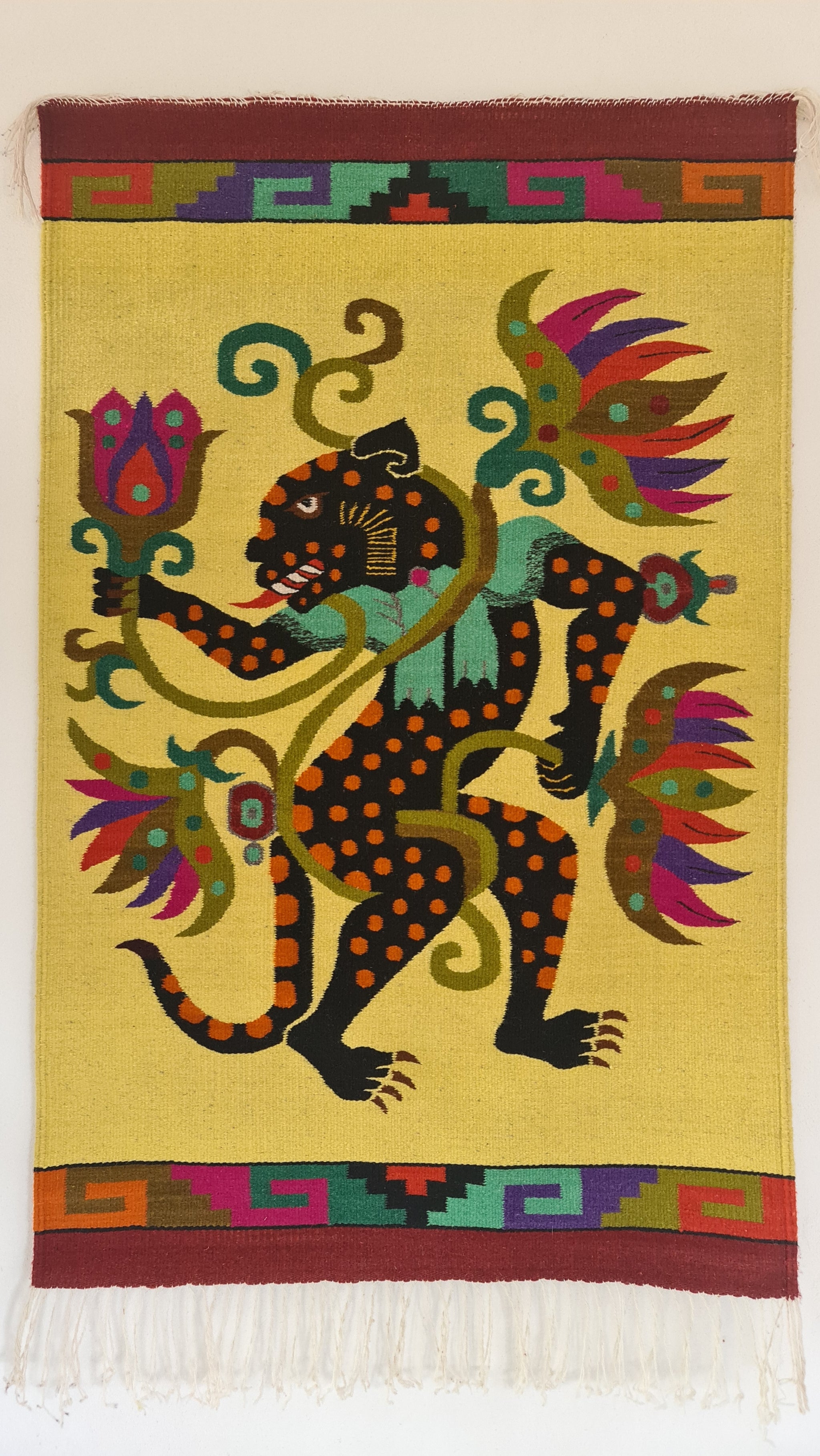Bèè: cochineal
$ 10,000.00
Size: 80x150cm; 2.6x5ft
Weaver: Rosa Sosa
Materials and methods: criollo sheep wool hand dyed with natural dyes: Bèé (cochineal) and Yauhtli (Tagetes lucida). Handwoven on a Zapotec style loom of the 16th century adapted from European styles. Woven using a 7 threads per inch reed and wool rayon blend for warp.
Design, patterns and symbols.
Cochineal is so sacred it shares the root sound bè that is used in bèæz for Jaguar, the majestic governor; bèé, for leaf cutter rain predicting ants; beæsguiín for chilli seeds, and bé'à for soil building mushrooms; the sound bèe is used for all sorts of powerful beings, ingredients and life force. The color of blood, chillies, ants and hot iron; the color red is in the long wave leght and when it becomes invisible to our retina but we can sense it with our skin in the form of infrared waves. Snakes perceive reality with a mechanism that uses celular water to create an image of the world they live on. Imagine what snakes have to say about global warming, given that they sense temperature with their eyes. Tune into the world of perception that lies beyond what we can see with our eyes, snakes are among the oldest animals living on earth in evolutionary terms, no wonder why our ancestors considered them as teachers.
During the celebrations of our village there are processions where ladies dress in the ceremonial regalia that consists of a cochineal dyed skirt wrap, hundreds of woman line up in such a way that resembles a red Serpent, the living image of Bealguiea, the flowered snake. The word for sister in our language literaly translates as my snake, bèalaá, the sisterhood of wisdom and medicine keepers.
Share:
Related Items
Reepi shchaá: the flow of the spirit
$ 6,500.00
Size: 80x150cm; 2.6x5ft Weaver: Herlinda Ruiz Bazan Materials ans methods: criollo sheep wool hand dyed with colorfast aniline dyes using an exhaustive method. Handwoven on a Zapotec style loom of the...
Yeéti: rainbow
$ 7,150.00
Size: 80x150cm Weavers: Francisca Hipólito Variant 1 Belen Bautista, Variant 2 Price: $350USD Materials and methods: criollo sheep wool hand dyed with colorfast aniline dyes using an exhaustive method. Handwoven...
Beaz guie'a: water lily Jaguar
$ 14,000.00
Size: 81x121cm; 32x47.6in Materials and methods: criollo sheep wool hand dyed with colorfast aniline dyes in exhaustive dye vat. This tapestry work was handwoven on a Zapotec walking loom of...











